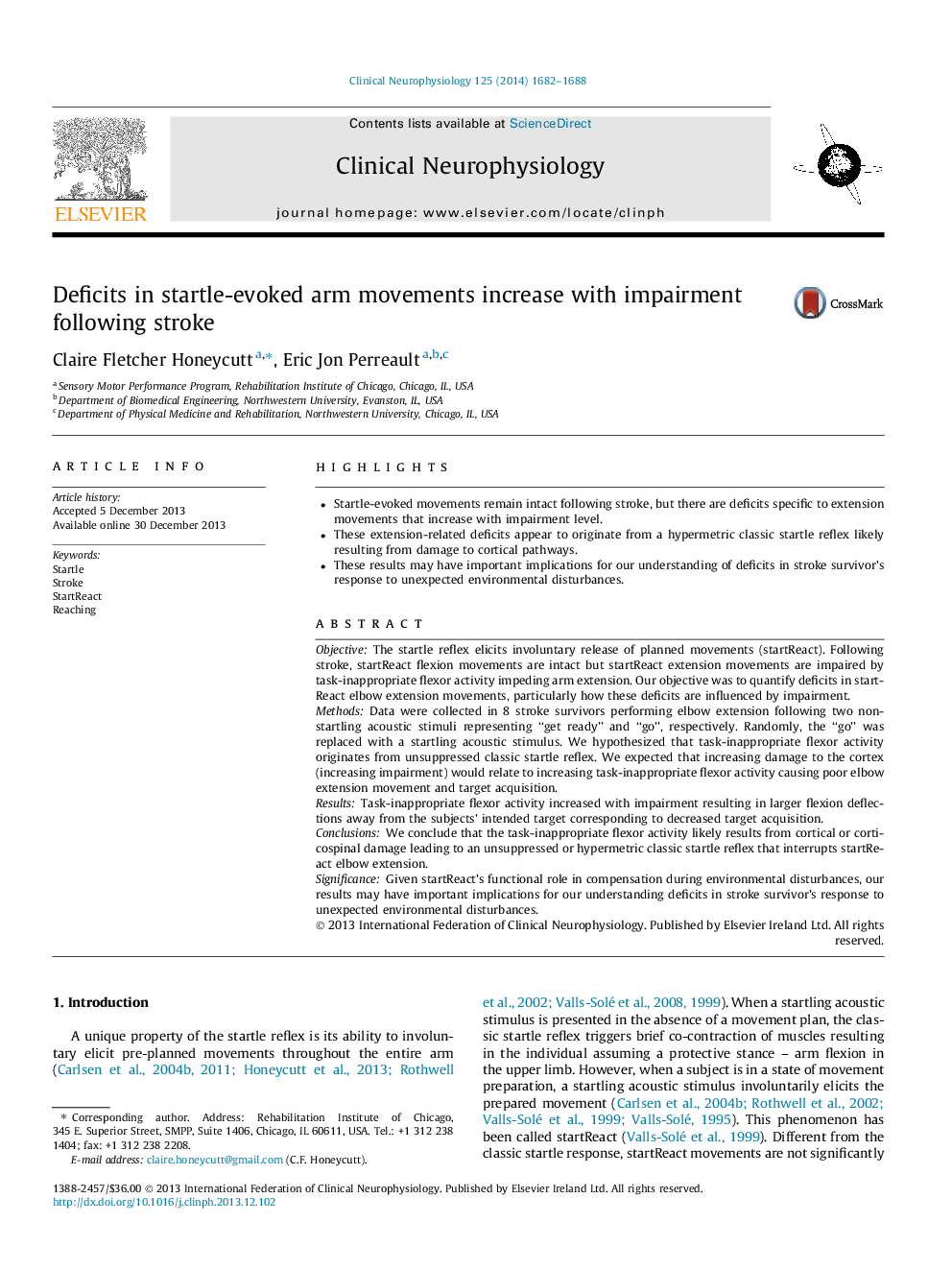| Article ID | Journal | Published Year | Pages | File Type |
|---|---|---|---|---|
| 3043497 | Clinical Neurophysiology | 2014 | 7 Pages |
•Startle-evoked movements remain intact following stroke, but there are deficits specific to extension movements that increase with impairment level.•These extension-related deficits appear to originate from a hypermetric classic startle reflex likely resulting from damage to cortical pathways.•These results may have important implications for our understanding of deficits in stroke survivor’s response to unexpected environmental disturbances.
ObjectiveThe startle reflex elicits involuntary release of planned movements (startReact). Following stroke, startReact flexion movements are intact but startReact extension movements are impaired by task-inappropriate flexor activity impeding arm extension. Our objective was to quantify deficits in startReact elbow extension movements, particularly how these deficits are influenced by impairment.MethodsData were collected in 8 stroke survivors performing elbow extension following two non-startling acoustic stimuli representing “get ready” and “go”, respectively. Randomly, the “go” was replaced with a startling acoustic stimulus. We hypothesized that task-inappropriate flexor activity originates from unsuppressed classic startle reflex. We expected that increasing damage to the cortex (increasing impairment) would relate to increasing task-inappropriate flexor activity causing poor elbow extension movement and target acquisition.ResultsTask-inappropriate flexor activity increased with impairment resulting in larger flexion deflections away from the subjects’ intended target corresponding to decreased target acquisition.ConclusionsWe conclude that the task-inappropriate flexor activity likely results from cortical or corticospinal damage leading to an unsuppressed or hypermetric classic startle reflex that interrupts startReact elbow extension.SignificanceGiven startReact’s functional role in compensation during environmental disturbances, our results may have important implications for our understanding deficits in stroke survivor’s response to unexpected environmental disturbances.
